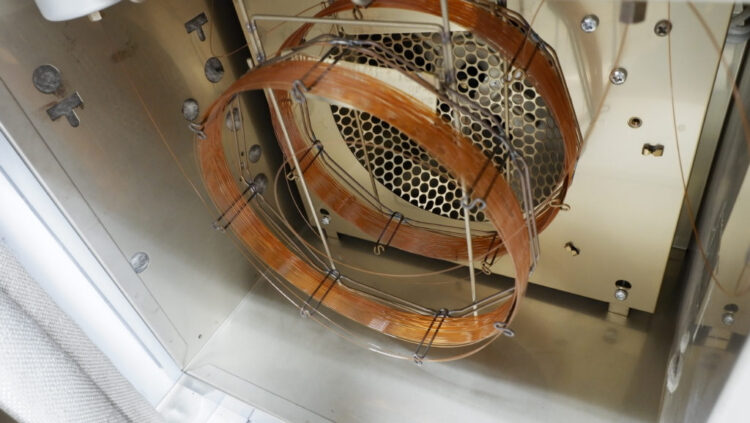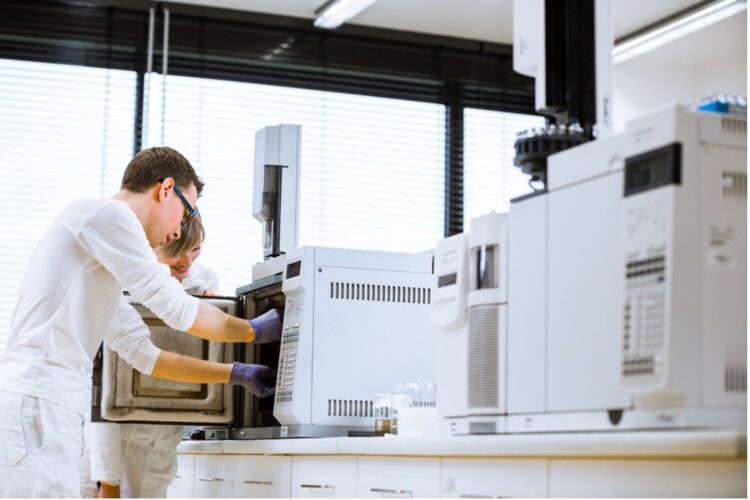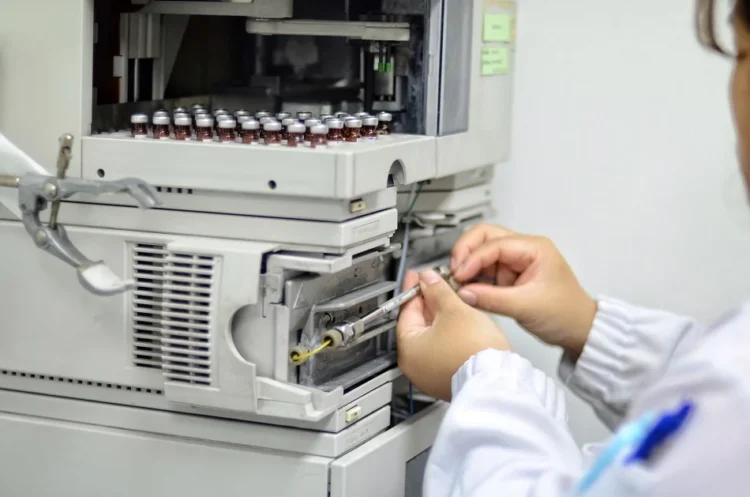Gas chromatography (GC) columns are an essential component of any gas chromatograph. GC columns act as a medium for separating and analyzing components in a sample, enabling researchers to identify and quantify the presence of different substances. In this article, we will discuss the definition of GC Columns, their applications, and an overview of their uses in research.
A gas chromatography (GC) column is a type of analytical instrumentation that separates molecules by size or other physical properties such as polarity or boiling point. The molecules are transported through a tube filled with inert packing material made specifically for this purpose. This packing material acts like tiny filters to separate out different compounds based on their size, polarity and boiling points; allowing researchers to identify specific compounds from complex samples without having to take them apart manually.
Gas Chromatography columns have many applications in research including environmental analysis, industrial process control and quality assurance testing. In environmental analysis, these columns can be used to measure trace levels of contaminants such as pesticides or PCBs in water supplies. Industrial process control relies heavily on the ability to accurately measure components within manufacturing processes, allowing for better safety regulations and improved product quality. For more info https://www.shopshimadzu.com/product/categories/gc-columns.
Types of GC Columns

When it comes to gas chromatography (GC), one of the most important aspects is the choice of the column. While both capillary and packed columns are widely used for GC, each has its own advantages and disadvantages. This article will discuss the differences between capillary and packed columns in order to help make an informed decision when selecting a column for an application.
Capillary columns are widely used in GC due to their high efficiency, resolution, reproducibility, and low cost. These columns are typically made from fused silica tubes with a diameter ranging from 0.25mm-0.53mm that can be up to 60 meters long! The outer surface of the tube is coated with a stationary phase which can vary depending on the analyte being separated – popular choices include polyethylene glycols (PEGs) or polydimethylsiloxanes (PDMS).
Capillary columns provide excellent resolution due to their very small internal volume; this also means they require less sample compared to traditional packed columns. Furthermore, they generally have faster analysis times as they require less time for equilibration before use than packed columns do – this makes them ideal for applications that require quick results such as quality control testing in food or industrial processes.
Characteristics and Selection Criteria for GC Columns

For scientists working in the field of gas chromatography (GC), selecting the right column is key to obtaining accurate and reliable results. GC columns come in a variety of lengths, diameters, and materials, making it essential to have a clear understanding of the desired characteristics before choosing a column. The following are some important criteria that should be taken into consideration when selecting the best GC column for any given application.
- Retention Time, Selectivity, and Efficiency: Retention time refers to how long it takes for components of a sample to travel through the chromatographic system until they reach their respective detector. The selectivity of a column is based on how well it separates different compounds from each other; this is determined by its interactions with different molecules as they pass through it. Finally, efficiency indicates how well solutes are separated within the same amount of time; higher efficiencies result in better resolution between two closely eluting peaks.
- Temperature Limits: Different columns can withstand different temperature ranges without deteriorating or becoming deactivated over time; this is an important factor when considering which type will work best with your application’s temperature requirements.
Column Care and Maintenance
Having a properly cared for and maintained column is key to ensuring the best performance of your chromatography system. To help ensure that your columns are performing at their peak, this article will provide information about cleaning procedures, storage conditions, and troubleshooting techniques.
Cleaning Procedures
It is important to make sure that you clean your columns regularly in order to ensure optimal performance. In general, it is recommended that you perform a solvent flush with pure organic solvents after every use. This should be done by running the solvent through the column at a low flow rate for several minutes before switching it off.
You may also need to perform additional flushes if there are any contaminants present or if you are switching between different types of mobile phases. Additionally, it is also important to remove any debris from the column before each use by carefully wiping down both inside and outside surfaces with an appropriate cleaning solution or lint-free cloths or swabs.
Storage Conditions
When storing your columns it is important to make sure they are kept in a cool and dry environment away from direct sunlight as ultraviolet light can degrade some of the components used in chromatography systems such as polymers or silica-based particles used in packing materials.
The Benefits of Using a High-Performance Chromatography System

A high-performance chromatography system can offer a number of benefits to users, including improved performance, higher resolution, and lower analysis costs. Here are some of the key benefits of using a high-performance chromatography system:
- Improved Performance: High-performance chromatography systems offer significantly improved performance over traditional chromatography systems. This is due to their ability to operate at higher flow rates and resolutions, which results in faster and more efficient separations.
- Higher Resolution: One of the main advantages of high-performance chromatography is its ability to achieve very high resolutions. This means that more closely related compounds can be separated from each other, resulting in cleaner and more accurate results.
- Lower Analysis Costs: Another major benefit of using a high-performance chromatography system is that it can help to reduce overall analysis costs. This is due to the fact that high-performance systems are able to run faster and at higher resolutions, which reduces the amount of time and resources required for each analysis.
Conclusion
As discussed, ensuring the best performance of your chromatography system requires a thorough maintenance routine and an understanding of how to fine-tune it for optimum results. Be sure to read up on any new developments in the field of chromatography so that you are well-informed when making decisions about caring for your equipment. Taking this proactive approach will keep your system in top shape and ultimately help you get more accurate data out of it.







